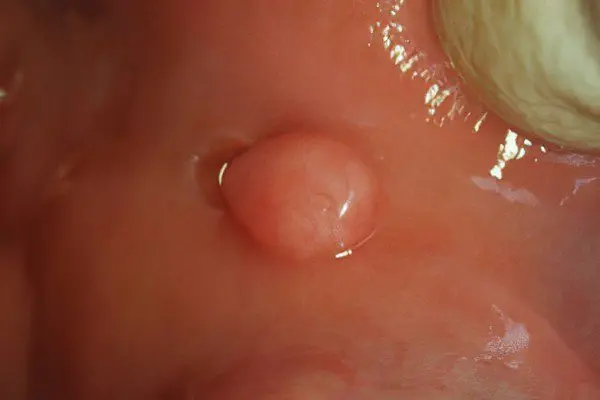Contents
Such a neoplasm as fibroma is often found in humans on the lips, tongue, under the mucous membrane of the cheeks and in other parts of the oral cavity. Depending on the location, it is called tongue fibroma, gum fibroma, etc. The tumor is benign and is formed by connective tissue fibers covered with a mucous membrane.
Fibroma of the oral cavity is most often represented by small dense nodules, sometimes it looks like branched polyps. Cases of the disease are recorded mainly in children and adolescents from 6 to 15 years, although the disease also occurs in adults.
Causes of oral fibroma

According to clinical dentistry, the main reasons for the formation of oral fibroids are inflammatory and traumatic processes, and a person’s genetic predisposition can also be traced. The tumor often develops with such neglected inflammatory diseases of the teeth and gums as periodontitis, stomatitis, gingivitis and glossitis.
Its formation can be caused by permanent mucosal injuries on the sharp edge of the tooth, biting the same area of soft tissues in the mouth, poor fixation of the denture or crown.
Signs of oral fibroma development
This benign neoplasm has a rounded shape, rising above the surface of the mucosa and resting on a wide base or stalk. Fibroma is usually painless and enclosed in a mucous membrane. Its surface is smooth, in rare cases ulceration is noted. With the addition of an infection, the tumor can become painful, reddened and swollen.
Fibroma of the oral cavity grows rather slowly and if it is not injured, then for a long time its size remains the same. With constant irritation, the tumor can degenerate into a malignant one.
Types of oral fibromas
There are several types of fibroids:
Dense (hard) fibroma – consists of coarse fibers of connective tissue, tightly adjacent to each other. Due to this, the tumor is characterized by a dense consistency. Usually such a fibroma develops in the gums and on the hard palate.
Soft fibroma – formed from thin, loosely attached connective tissue fibers with a significant number of nuclei. Often the place of localization is the mucous membrane of the cheeks and tongue.
Fibroma from irritation is one of the most common neoplasms in the oral cavity. Despite its name, this type of fibroma is not a true tumor, but merely the result of reactive hyperplasia. It is a pale pink papule with clearly defined boundaries, which gradually turns into a nodule. It is localized usually on the mucous membrane of the cheeks, gums, lips or tongue.
Fibroma of the tongue. This type of fibroma is most often formed under the mucous membrane of the tongue, growing from the fibers of the connective tissue. It grows very slowly and forms dense painless nodules with a non-ulcerated surface. On the mucous membrane of the tongue, mainly soft fibromas are formed, in the soft tissues of the tongue, dense fibromas can develop. They are easily removed after dissection of the mucous membrane by husking the fibroma, followed by suturing.
Fibroma of the gums. With the formation of gum fibroma, the patient feels a dense formation with a smooth surface in this place. During a medical examination, you can notice that the color of the mucosa is not changed and there is no pain on palpation. On the gums, mainly hard fibromas develop, which are characterized by very slow growth.
Symmetrical fibromas are formed on the palatal part of the gums, in the area of the third molars (teeth). They have a dense texture and a rounded elongated shape. However, it is not a true tumor. The formations represent only the growth of the gums as a result of reactive hyperplasia. With chronic trauma to the gums with removable dentures, a lobulated fibroma develops. It is characterized by a bumpy surface with traces of cicatricial changes.
Diagnostics
According to the typical symptoms of fibroma and as a result of a visual examination, the dentist can immediately make a diagnosis of the disease. To determine the depth of germination of the tumor, the patient is sent for an ultrasound scan. In rare cases, and in the presence of ulceration and inflammation, a biopsy is performed. Histological examination of the neoplasm is most often done after removal of the fibroma.
Oral fibroma treatment
The most effective treatment for fibroids in the oral cavity is surgical excision of the tumor using radio waves or a laser. Fibroma on the base is removed with an arcuate or bordering incision, on the stalk – it is cut out with two bordering incisions. If the size of the fibroma is too large, then in order to prevent deformation of the mucous membrane, a patchwork covering of the wound is used. To do this, use a part of the mucosa, from adjacent tissues.









